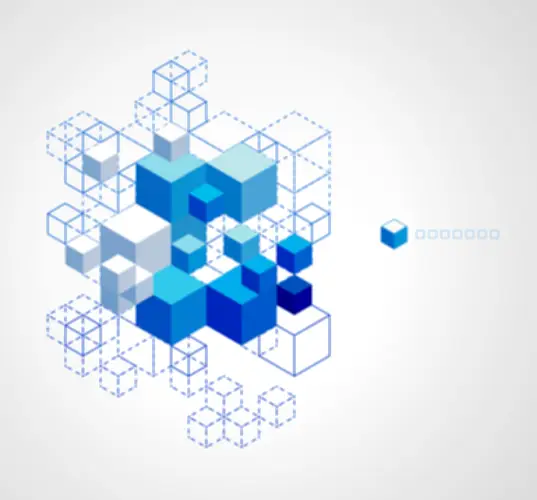Like we’ve already mentioned, missteps together with your CI/CD process can have ripple effects on the effectiveness and effectivity of software program delivery. It can result in longer deployment instances, elevated service restoration durations, and heightened dangers of unsuccessful changes. Thus, optimizing CI/CD pipelines isn’t nearly streamlining operations; it’s additionally about positively influencing very important software program delivery metrics. To ship the greatest degree of visibility, these metrics ought to be correlated with other data, together with log analytics and traces from your software setting. DevOps control metrics like lead time, deployment dimension, change failure price, mean time to restoration, defect depend, code coverage, and deployment frequency of their CI/CD workflows. It’s a strategic strategy to refining processes and guaranteeing alignment with enterprise objectives.
Repeatedly Improve
A well-tuned, fault-tolerant, and scalable CI/CD pipeline is essential to help fashionable Agile teams. If your CI/CD operations are sluggish and you are unable to push out new releases shortly, you could not have the ability to deploy fixes to efficiency bugs earlier than they turn into crucial problems on your end-users. From legacy techniques to cloud software, BMC helps DevOps throughout the enter enterprise. All the above stages are repeatedly monitored for any errors and rapidly notified to the related parties. Decrease frequencies, however, signify that your builders aren’t feeding common code commits to the CI/CD pipeline for quite lots of reasons, like task phasing or batching changes. The Jenkins Prometheus plugin exposes a Prometheus endpoint in Jenkins that enables Prometheus to collect Jenkins utility metrics.
CI instruments mechanically run a set of exams, together with unit checks, integration exams, and typically even useful checks, each time new code is pushed to the repository. By repeatedly monitoring the repository for modifications, CI tools make positive that the newest code is at all times tested, decreasing the chance of integration points and making the event course of more efficient. One of the basic options of Steady Integration (CI) tools is their integration with model management systems (VCS) like Git, Subversion, and Mercurial. This integration allows CI tools to routinely trigger builds, checks, and other pipeline processes each time code is committed to the repository. CI/CD stands for Steady Integration and Steady Delivery, which typically extends to Continuous Deployment.
With added visibility into your CI/CD pipeline, you can ensure larger manufacturing surroundings consistency, detect points far easier, and achieve general insights into the build and deployment process. Collectively, Steady Integration (CD) and Steady Supply (CD) is a key side that helps on this regard. It permits users to build integrated improvement pipelines that unfold from growth to production deployments throughout the software program growth process. Implement changes and process enhancements based on the metrics to optimize your software program development and delivery practices. Tracking metrics allows teams to measure the influence of modifications or improvements made to the CI/CD pipeline over time.
Steady Monitoring And Observability For A Ci/cd Pipeline
By monitoring the number of rollbacks and reruns within the deployment process, organizations can identify potential points that lead to wasted resources and increased prices. Analyzing the reasons behind rollbacks and reruns may help in identifying areas for enchancment, similar to better automated testing or extra thorough code critiques. Deployment frequency and lead time metrics provide valuable insights into the efficiency of the CD process. By measuring the quantity and frequency of deployments, organizations can assess the velocity at which new options and bug fixes are delivered to manufacturing. Analyzing lead time metrics, which measure the time taken from code commit to deployment, might help determine areas of improvement in the CI/CD pipeline. Optimizing deployment frequency and lead time can cut back resource waste and improve time-to-market.
Regardless Of the complexities, CI/CD provides vital benefits, accelerating growth and enhancing software program quality. Whereas challenges corresponding to technical complexity and legacy integration exist, strategic planning and training can mitigate these points. Integrating automated safety scans and secure coding practices is important for maintaining software program integrity. Lead time, also called time-to-market, is the entire time that an idea takes to achieve the users. Nevertheless, for the aim of monitoring the CI/CD pipeline performance, lead time (as approached by DORA) is counted from the second a code is committed to the CD pipeline. If you automate deployments to pre-live environments but deploy to production manually, you improve the possibility of a failed deployment.
Automating CI/CD monitoring helps preserve dependable, effective, and goal-aligned improvement and deployment processes. Octopus helps software program teams streamline Steady AI as a Service Supply to enable them to deliver worth faster. More than four,000 organizations all over the world use our options for Continuous Delivery, GitOps, and launch orchestration to maintain their software program supply operating easily. Octopus manages software delivery across multi-cloud, Kubernetes, knowledge centers, and hybrid environments, whether you’re working with containerized apps or legacy techniques.
Using CI/CD metrics, you’ll have the ability to accelerate your growth cycle, enhance software program quality, and make data-driven decisions. One Other important factor is that for a deployment to be smoother, every surroundings apart from manufacturing needs to be much like manufacturing. Homogeneous environments might be exhausting to realize in massive organizations, but the thought is to use the identical tooling, course of, and configurations in all the environments.
One of the most important challenges in adopting CI/CD practices is cultural resistance throughout the organization. Builders, operations teams, and other stakeholders could also be used to traditional methods of working, the place manual processes dominate. By optimizing the efficiency of your pipeline, you help make sure that builders get quick suggestions on their changes, which is crucial for sustaining productivity. Without a complete suite of unit tests, integration exams, and end-to-end exams, it turns into tough to make sure the quality of the code as it strikes by way of the pipeline.

By deploying modifications incrementally, teams can intently monitor performance, shortly determine points, and rollback adjustments if wanted. Incremental deployments enhance reliability, guaranteeing that functions stay out there and stable during updates. This reduces the number of dangerous versions reaching manual phases and wasting time and stops them reaching manufacturing where they’ll influence customers. Early testing ensures that defects are recognized https://www.globalcloudteam.com/ and resolved promptly, decreasing the cost and complexity of bug fixes. CD instruments present robust variable management capabilities, allowing groups to manage environment-specific configurations, similar to environment variables, API keys, and deployment parameters.

These infrastructure metrics can give you clues into whether your job was impacted by heavy load on the server or a scarcity ci/cd monitoring of available resources. You will need tools to collect and retailer your metrics data, visualize this knowledge, and take automated action. While our preliminary efforts had been largely centered on the grafana/grafana repository, the success of our method soon caught the eye of other teams inside Grafana Labs. We recognized the potential to increase this observability to more repositories in our group. Nonetheless, we wanted to make sure that scaling up didn’t imply added overhead for these groups. Our vision was a seamless integration, the place different groups may achieve advantage without the trouble of setting every thing up from scratch.
CI/CD pipelines are one key enabler for achieving DevOps goals, however to fully implement DevOps, organizations must undertake additional practices and cultural changes beyond CI/CD. The CI process encourages frequent code integration and supplies fast feedback on whether or not the changes lead to a deployable software program version. The first part builds and tests the new software program model and should let a developer know inside 5 minutes if their modifications have brought on an issue. Longer-running checks are deferred to a later section, however nonetheless precede any manual steps to make sure folks don’t waste time on a bad software program version.

- CI/CD pipelines depend on a broad array of tools for building, testing, and deploying software program.
- Whereas CI focuses on integrating and testing code repeatedly, CD ensures that the code is all the time in a deployable state.
- CI tools usually include or integrate with artifact administration capabilities, permitting teams to retailer and handle build outputs in a centralized repository.
- Contemplate the 12 key metrics talked about above and choose further metrics based on your specific wants.
Platform engineering groups often use improvement branches to check their optimizations (e.g., elimination of pointless jobs or splitting up a larger job into a quantity of jobs that run in parallel). Establishing the baseline performance for every of those check branches can help you examine their performance to the default branch. A dashboard just like the one proven below may help you gauge every branch’s average, median, p50, and p95 durations. If you discover that a improvement branch is persistently outperforming the default department, you’ll have the ability to slowly part in these adjustments to bolster the pace and reliability of your production pipeline. If your dial tone is exhibiting excessive latency or fails to return any data, it probably signifies issues which would possibly be unrelated to your developers’ code adjustments. For example, high dial tone latency could be caused by backlogged CI runners or the shortcoming to provision additional runners.
If you need help establishing these metrics be happy to succeed in out to me through LinkedIn. Even the best-written code or the most flawless application will result in a poor consumer expertise if issues within the CI/CD pipeline prevent smooth and steady deployment. CI/CD, short for Steady Integration and Steady Delivery (or Deployment), is a contemporary software program improvement apply that automates the processes of integrating code modifications and delivering applications.
Nevertheless, it’s inconceivable for platform engineers to identify CI/CD issues with dashboards alone. A robust community of automated displays will enable you to detect CI/CD issues extra rapidly, which helps shorten development cycles and the time spent ready for pipelines to be fastened. Homogeneous environments might be exhausting to achieve in huge organizations, but the thought is to make use of the same tooling, course of, and configurations in all environments. CI/CD practices are essential for the effective development and deployment of microservices and cloud-native functions.
